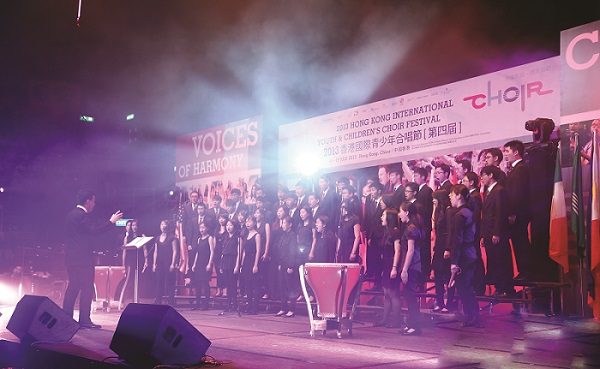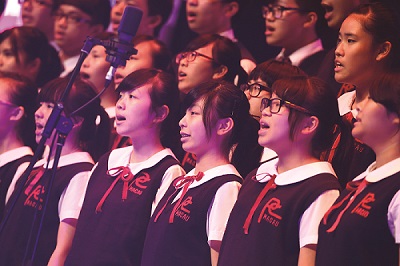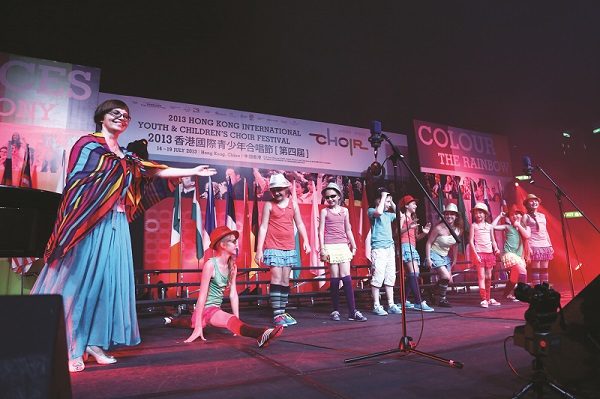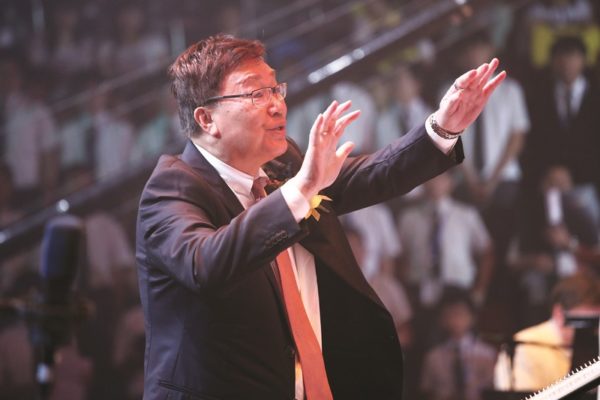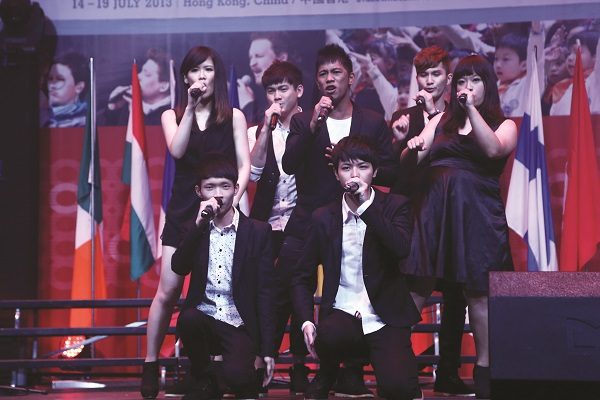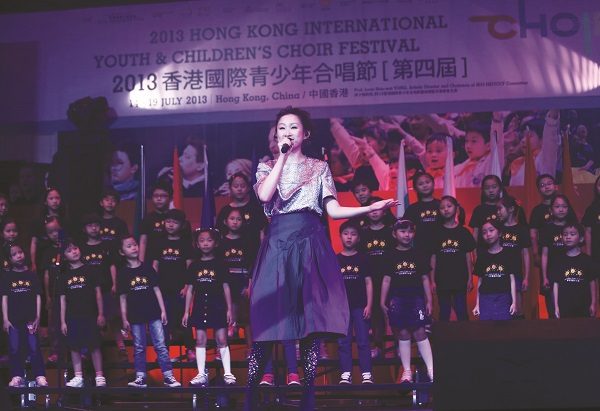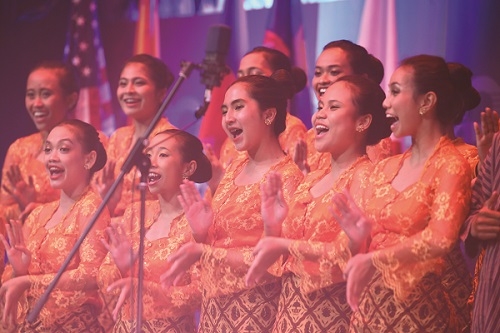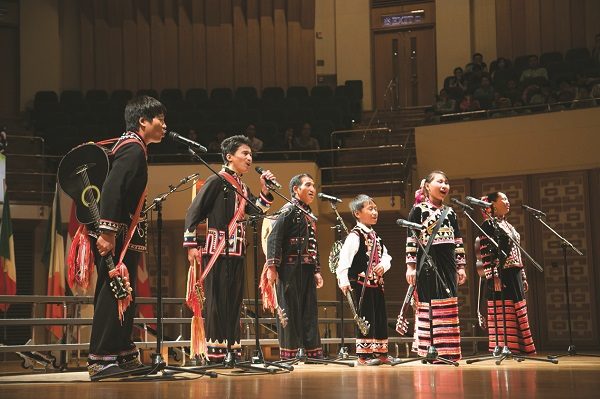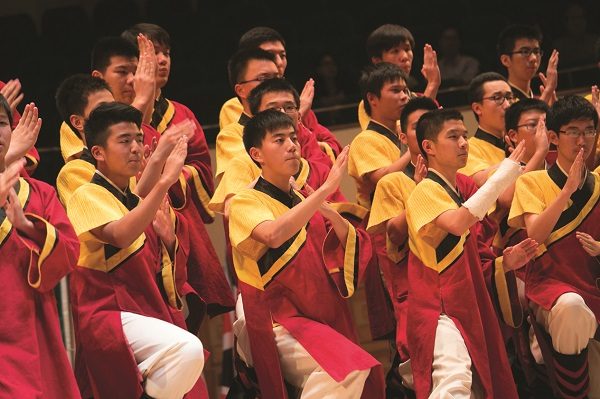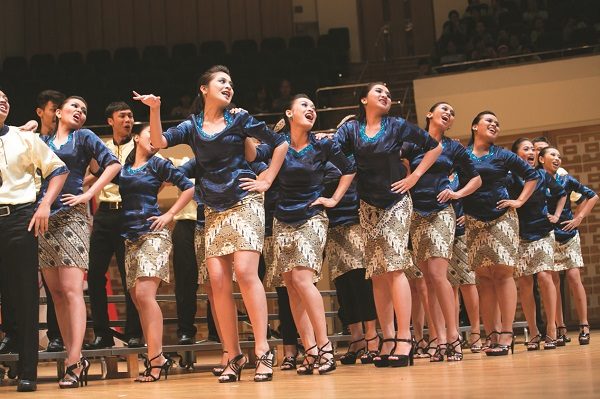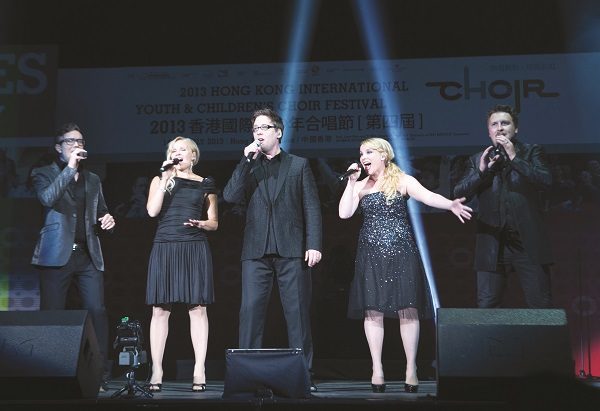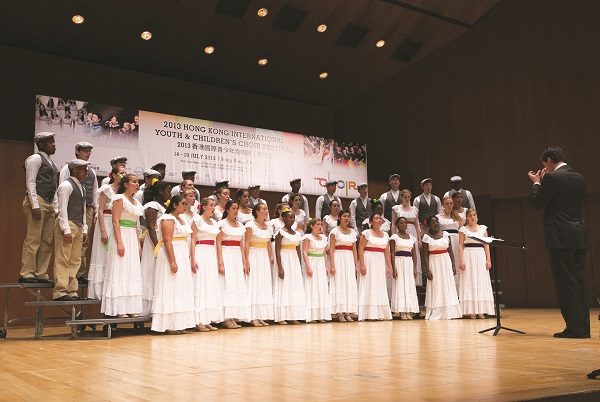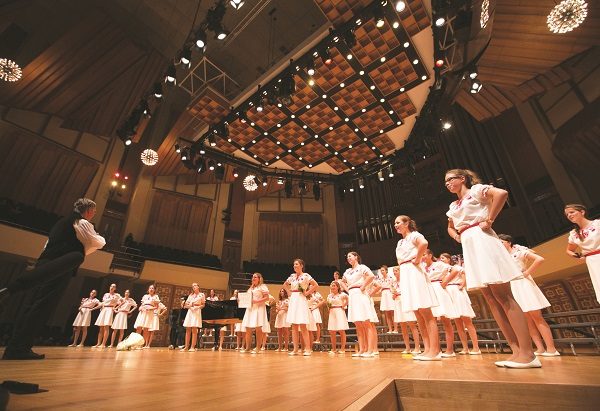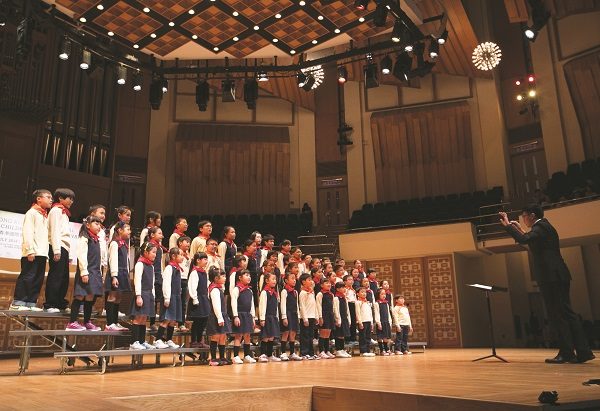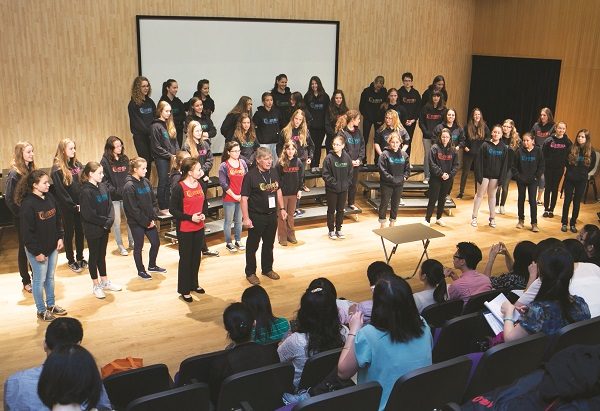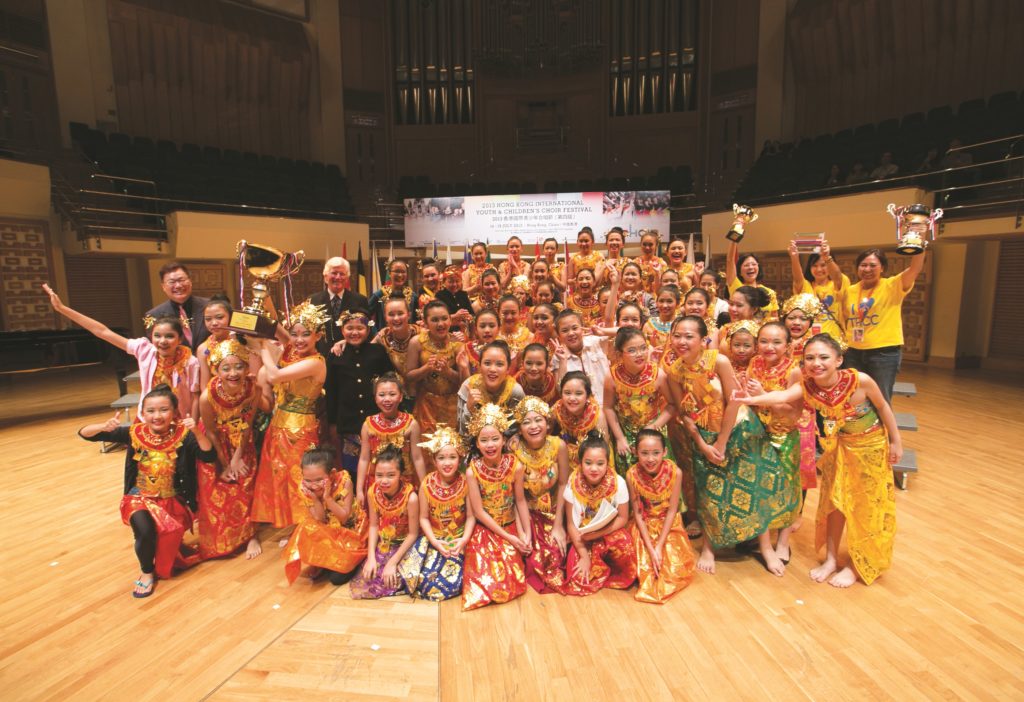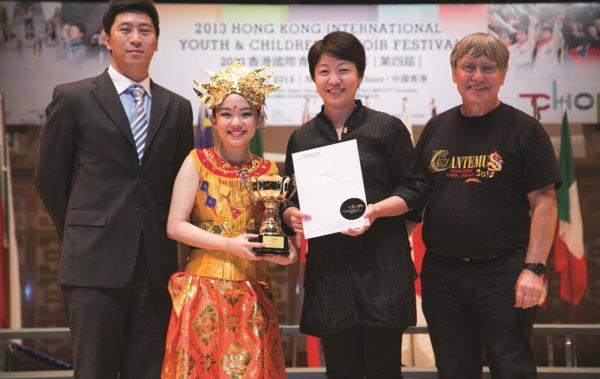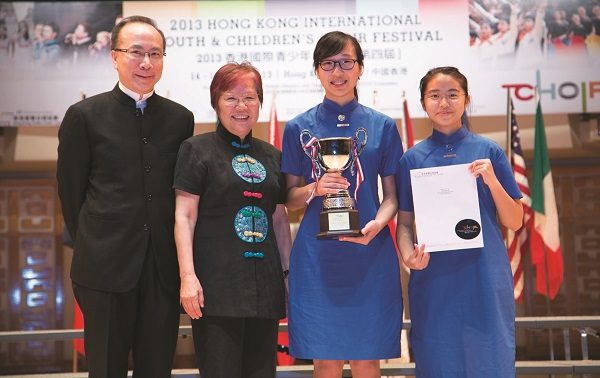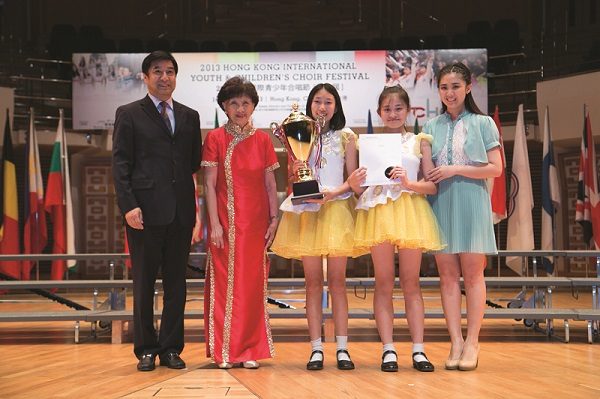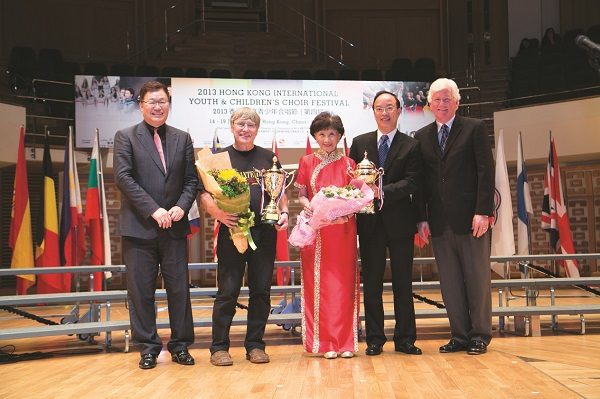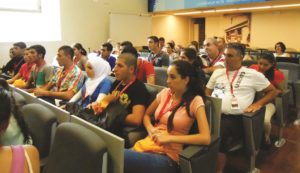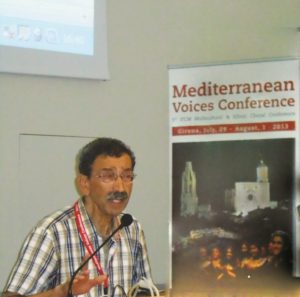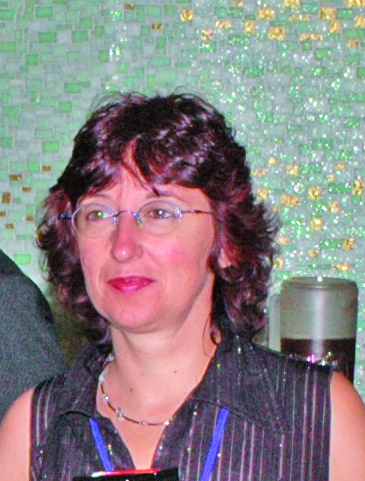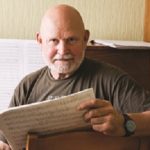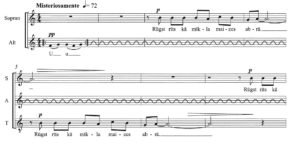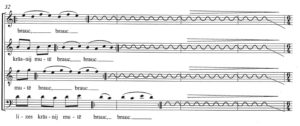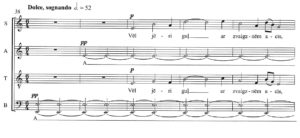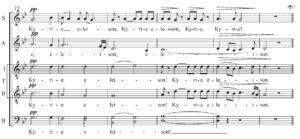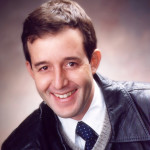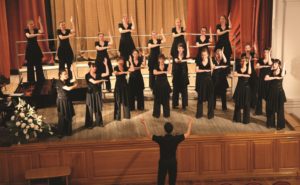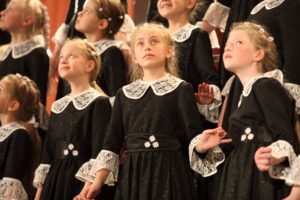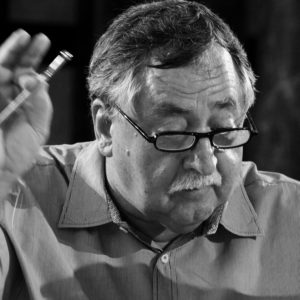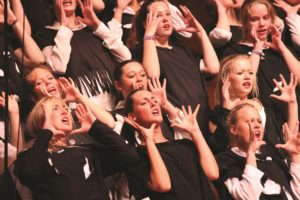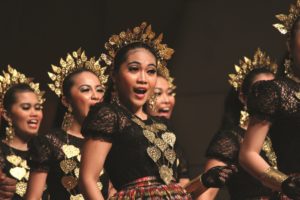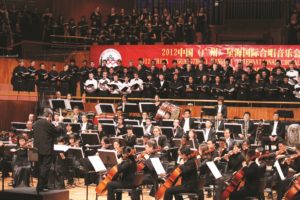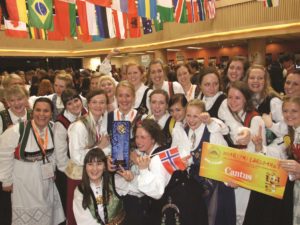Andrea Veneracion: Philippine Choral Ambassador to the World
Jonathan Velasco
choral conductor & teacher
When Prof. Andrea Veneracion passed away on July 9, 2013 at the age of 85, it was, as former dean of the University of the Philippines College of Music Ramon Acoymo put it, “the passing of an age”. She was the last among a group of choral personalities who studied in the United States in the 1950s and ’60s. They returned to the Philippines with their knowledge and skills in choral conducting and singing, thus paving the way for the scintillating Philippine choral movement the world knows today.

Veneracion and the Madz: A Life-Changing Experience
A towering presence, Prof. Veneracion elevated the Philippines’ choral reputation throughout decades of excellence with the choir she founded in 1963: the University of the Philippines Madrigal Singers. The choir celebrates its fiftieth anniversary this year. With her perfect balance of choral technique, intuition, and artistic sense, she led the choir to top prizes in the most prestigious European choral competitions. The MADZ, as they are fondly called, have been welcomed in the major concert halls of Europe, North America, and Asia. The world was intrigued: what would a madrigal choir from Southeast Asia sound like? And why are they seated in a semicircle? With her strong musical personality, she led the MADZ as it conquered the hearts and ears of the choral world, from its first performances in the United States in 1969 to annual concert tours around the world for the following three decades.

I was fortunate to be part of this magical semicircle of musicians in the 1980s. I entered as a trainee in 1981, and became its assistant choirmaster a year later. I sang with them until the famous six-month tour of Europe and the United States in 1989, when they won ten first prizes in five competitions, the most reaped by any batch of singers from the ensemble ever. I left the group in mid-tour to start my studies at the Berliner Kirchenmusikschule under Martin Behrmann.
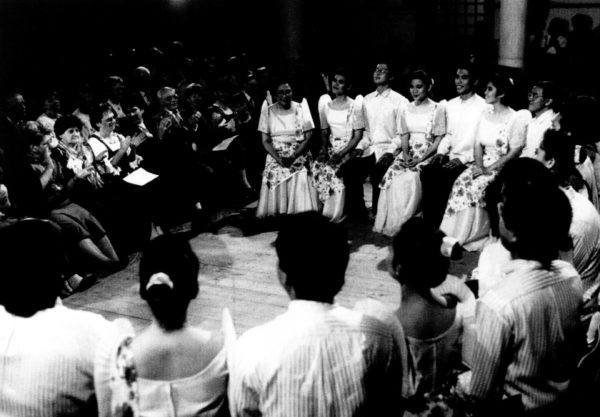
What was it like to be invited to sit in that semicircle? It felt like one had ‘arrived’. At that time, singers never auditioned for the Madrigal Singers. They were invited. One could always come in as a trainee. To get to sit inside the semicircle, a chair or position must first be vacated by a singer no longer able to sing with the group for whatever reason. Prof. Veneracion then invited one of the trainees in. The trainee’s first position in the semicircle would be the chair nearest to Prof. Veneracion. This chair was infamously called the ‘hot seat’. She sat and conducted from the edge of the semicircle and cued the singers with just slight movements of her head and body.
It is fascinating to sing with the group. The singers are seated in STAB formation, male and female singers alternating. From soprano 1, the nearest other soprano is four seats away, and the next soprano 1 is eight seats in either direction. With this formation, and an almost shoulder-to-shoulder nearness, the singers become aware of everything happening around them, including entrances, breathing, intonation etc.
The choir was led by the musical instincts of Prof. Veneracion, who guided them in performances with her presence, letting the voices communicate directly with the audience without passing through her. With the MADZ as her instrument, Andrea Veneracion was able to communicate her musical intentions with the rest of the world.
Ambassador of Goodwill
Andrea Veneracion’s love affair with the international choral world began with the Madrigal Singers’ 1969 tour of the United States (their first international tour). It was capped by a performance at the Lincoln Center International Choral Festival, to tremendous acclaim. Choirmaster Veneracion took several curtain calls before the audience subsided.
She followed this with international tours and performances spanning three decades. During those trips, she expanded her contacts with the choral world by initiating exchanges and developing ties which eventually led to her being one of the few Asians at the helm of the International Federation for Choral Music. To this day, the choral world equates the Philippines with the name of Andrea Veneracion.
Prof. Veneracion and the Madrigal Singers were excellent ambassadors of goodwill for the Philippines. They were the country’s foremost choral emissaries to the international diplomatic community. Erstwhile Philippine President Ferdinand Marcos brought the Madrigal Singers with him on several state visits, notably during the opening of diplomatic ties with the former USSR in 1976, to showcase the richness of the singing tradition in the country. The MADZ also sang for the state visit of then President Corazon Aquino to Germany in 1989. Every time the country had state visitors, the MADZ were asked to sing for the guests, as worthy representatives of the country’s musical culture.

The Philippine Choral Movement
Perhaps the greatest legacy of Prof. Veneracion is her work for the propagation of Philippine choral music. She encouraged composers and arrangers to write music for the Madrigal Singers. The result was a steady stream of outstanding compositions and arrangements arranged for a cappella chorus. They were hewn for every genre from materials and music concepts from Philippine folk songs, Filipino tribal or traditional music, contemporary song hits, church liturgy, and a wide array of eclectic sources.
She also kick-started the formation of a Singing Philippines through a series of festivals and workshops led by her singers and alumni. As the artists-in-residence of the Cultural Center of the Philippines, the Philippine Madrigal Singers were brought to the countryside to train conductors and choirs. Andrea taught her singers to spread this vision more quickly to eager-to-learn musicians throughout the archipelago. Because of her enormous contribution to the growth of Philippine choral music, she was named National Artist for Music in 1999, the highest cultural award bestowed by the Philippine government to an individual.

The proof of the overwhelming success of her work lies in the unprecedented growth of the Philippine choral movement today. The Philippine Choral Directors Association, whose board is mostly composed of MADZ alumni, is a testament to her energetic vision and legacy. A huge number of former members of the Madrigal Singers are now distinguished choral conductors, composers, arrangers, educators, and musicians.
The country recognized her selfless contributions to the world of choral music, and accorded her a magnificent service at the Main Theater of the Cultural Center of the Philippines. Presented with full military honors at her funeral, she was given her final resting place at the ‘Libingan ng mga Bayani’ (Cemetery of Heroes). The theater was filled beyond capacity with choral singers both on and off stage, in the seats and in the aisles, all singing to the woman who unified them and gave them a voice.
Andrea Veneracion was the voice of her age, and beyond.
 Jonathan Velasco was the assistant choirmaster of the U.P. Madrigal Singers from 1982-1989. He is the president of the Philippine Choral Directors Association, and advisor to the board of IFCM. He is a lecturer at the University of the Philippines College of Music, and the conductor of the Ateneo Chamber Singers. Email: choirmaster@gmail.com
Jonathan Velasco was the assistant choirmaster of the U.P. Madrigal Singers from 1982-1989. He is the president of the Philippine Choral Directors Association, and advisor to the board of IFCM. He is a lecturer at the University of the Philippines College of Music, and the conductor of the Ateneo Chamber Singers. Email: choirmaster@gmail.com
Edited by Holden J. Ferry, USA
